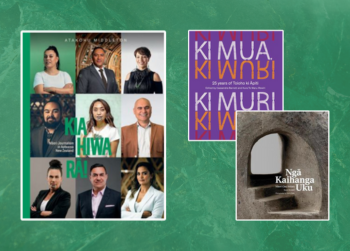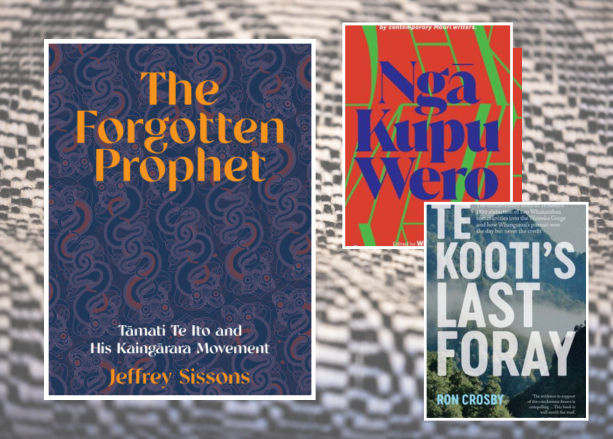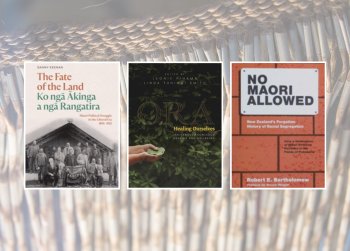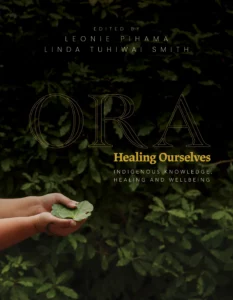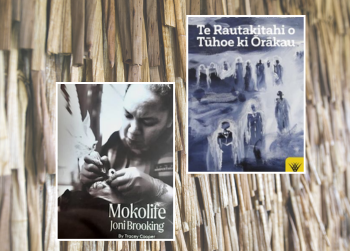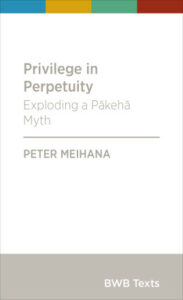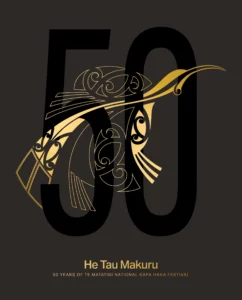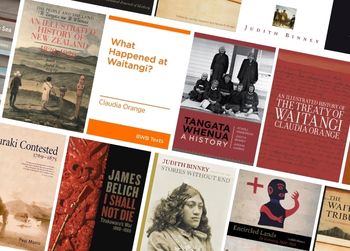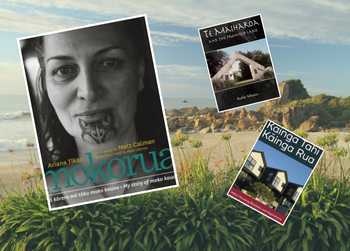A wide range of books have been added to our Māori Collection over the past few months across a variety of subjects – have a browse and add them to your to-read list!
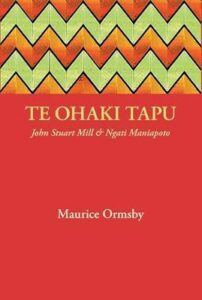 Te Ōhākī Tapu : John Stuart Mill & Ngāti Maniapoto / Ormsby, Maurice
Te Ōhākī Tapu : John Stuart Mill & Ngāti Maniapoto / Ormsby, Maurice
“Te Ōhākī Tapu – the Formal Pact – was made between 1882 and 1885 by five tribes of the Rohe Pōtae (King Country) led by Ngāti Maniapoto, with the colonial government which needed land for the main trunk railway line. The iwi sought access to the wider money economy, European agricultural technology and development finance. The influence of Utilitarianism – and of its proponent John Stuart Mill – is evident in Te Ōhākī Tapu, as it is in the 1835 Ngā Puhi declaration of independence and the 1840 Treaty of Waitangi. Unlike the Treaty, Te Ōhākī Tapu took place in the context of an established New Zealand legal system and a parliamentary democracy. Although the government did not honour the Formal Pact, Ngāti Maniapoto did, even to the point of going to war on behalf of its erstwhile enemies. The Utilitarian basis of our public policy is still apparent today. It explains the marked difference in approaches to lawmaking between New Zealand and countries such as Australia and the United States.” (adapted from Catalogue)
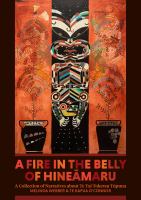 A fire in the belly of Hineāmaru : a collection of narratives about Te Tai Tokerau tūpuna / Webber, Melinda
A fire in the belly of Hineāmaru : a collection of narratives about Te Tai Tokerau tūpuna / Webber, Melinda
“Remarkable stories of twenty-four inspirational tupuna of Te Tai Tokerau.” (Catalogue)
Read more about this title over on the Auckland University Press website
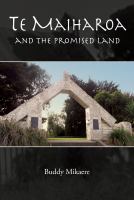 Te Maiharoa and the promised land / Mikaere, Buddy
Te Maiharoa and the promised land / Mikaere, Buddy
“In 1848, eight million hectares of land in Te Waipounamu – the South Island – was purportedly sold for just £2000. Hipa Te Maiharoa, a charismatic prophet, in the 1870s led his people in the fight against the injustice of this land deal by occupying land they believed had not been sold. This ongoing battle against the Crown was waged with words – but eventually let to an armed confrontation in 1879. Based on interviews with kaumātua and extensive research, renowned Māori historian Buddy Mikaere tells the moving story of Te Maiharoa.” (Catalogue)
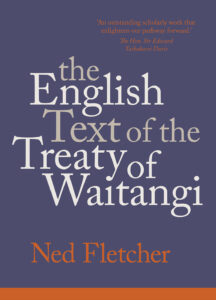 The English text of the Treaty of Waitangi / Fletcher, Ned
The English text of the Treaty of Waitangi / Fletcher, Ned
“How was the English text of the Treaty of Waitangi understood by the British in 1840? With one exception, the Treaty sheets signed by rangatira and British officials were in te reo Māori. The Māori text, Te Tiriti o Waitangi, was a translation by the missionary Henry Williams of a draft in English provided by William Hobson. Despite considerable scholarly attention to the Treaty, the English text has been little studied. In part, this is because the original English draft exists only in fragments in the archive; it has long been regarded as lost or ‘unknowable’, and in any event superseded by the authoritative Māori text. […] Through groundbreaking scholarship, Fletcher concludes that the Māori and English texts of the Treaty reconcile, and that those who framed the English text intended Māori to have continuing rights to self-government (rangatiratanga) and ownership of their lands. This original understanding of the Treaty, however, was then lost in the face of powerful forces in the British Empire post-1840, as hostility towards indigenous peoples grew alongside increased intolerance of plural systems of government.” (adapted from Catalogue)
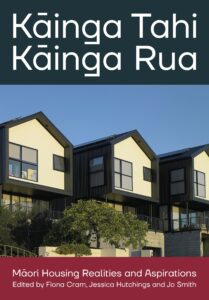 Kāinga tahi, kāinga rua : Māori housing realities and aspirations
Kāinga tahi, kāinga rua : Māori housing realities and aspirations
“Kāinga Tahi, Kāinga Rua surveys the many ways Māori experience home and housing across Aotearoa New Zealand. These accounts range from the broader factors shaping Maori housing aspirations through to the experiences of whānau, hapū, and iwi that connect to specific sites and locations. From statistically informed analyses to more poetic renderings of the challenges and opportunities of Māori housing, the book encompasses a rich range of voices and perspectives. Opening with chapters on the wider contexts – history, land, colonisation – the book moves through to focused, and often intimate, discussions of the relationships between housing, home and identity.” (adapted from Catalogue)
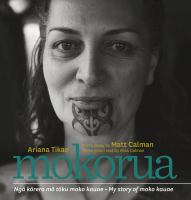 Mokorua : ngā korero mō tōku moko kauae = my story of moko kauae / Tikao, Ariana
Mokorua : ngā korero mō tōku moko kauae = my story of moko kauae / Tikao, Ariana
“Mokorua is a revealing and emotional account of one woman receiving her moko kauae. Ariana Tikao grew up in suburban Christchurch in the 1970s and ’80s surrounded by te ao Pākehā. This book tells the story of Ariana exploring her whakapapa, her whānau history, and her language. This is one woman’s story, but it is interwoven with the revival of language, tikanga and identity among Kāi Tahu whānau over the last thirty years. Ariana’s journey culminates in her decision to take on Mokorua – her moko kauae – from tā moko artist Christine Harvey. Through Ariana’s words, te reo Māori text by her hoa tāne Ross Calman, and an intimate, moving photo essay by Matt Calman, Mokorua reveals the journey of one woman reclaiming her Māori identity.” (adapted from Catalogue)
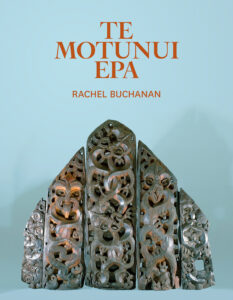 Te Motunui Epa / Buchanan, Rachel
Te Motunui Epa / Buchanan, Rachel
“‘This is a story about the power of art to help us find a way through the darkness. It is about how art can bring out the best in us, and the worst. The artworks in question are five wooden panels carved in the late 1700s by relatives in Taranaki.’ Commissioned, created, mounted, dismantled, hidden, found, sold, smuggled, on-sold, advertised for auction, withdrawn from auction, touched, judged, debated, locked up, hidden, found, re-sold, returned. This stunning book examines how five interconnected archival records, Te Motunui Epa, have journeyed across the world and changed international law, practices and understanding on the protection and repatriation of stolen cultural treasures. By placing these taonga/tupuna at the centre of the story, Rachel Buchanan (Taranaki, Te Atiawa) present a narrative, richly illustrated, that provides a fascinating and rare account of art, ancestors and power.” (Catalogue)
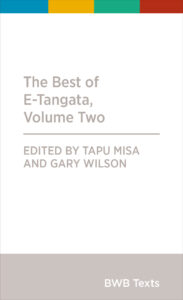 The best of e-Tangata. Volume two
The best of e-Tangata. Volume two
“A thought-provoking set of Māori, Pasifika, and tangata Tiriti writers combine in this celebration of some of the best writing from E-Tangata. Traverse a landscape of contemporary and historical issues through the lens of a mother’s loss, a man’s hard-won expertise, a homesick student abroad and with the knowledge that all good things begin with ten guitars. These writings exemplify that grief and hope go hand-in-hand in the pursuit of justice and the reclaiming of identities in Aotearoa and the Pacific.” (from Bridget Williams Books)
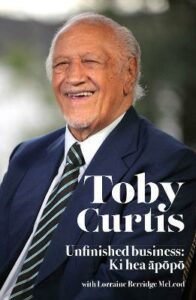 Unfinished business : ki hea āpōpō / Curtis, Toby
Unfinished business : ki hea āpōpō / Curtis, Toby
“The late Te Arawa leader sets out his life from poverty to knighthood with frank views on education and racism. Knowing that he was unwell, over the past year the late Sir Toby Curtis worked with long-time friend Dr Lorraine Berridge McLeod to record his life and views on key areas from his stellar career — especially Māori education and leadership, and his experience of racism.” (Catalogue)
 Understanding Te Tiriti : a handbook of basic facts about Te Tiriti o Waitangi / Smail, Roimata
Understanding Te Tiriti : a handbook of basic facts about Te Tiriti o Waitangi / Smail, Roimata Māori prosperity and development / Clydesdale, Greg
Māori prosperity and development / Clydesdale, Greg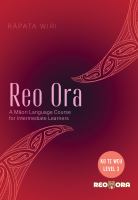 Reo ora : a Māori language course for intermediate learners. Ko te weu level three / Wiri, Kingi Robert J
Reo ora : a Māori language course for intermediate learners. Ko te weu level three / Wiri, Kingi Robert J

